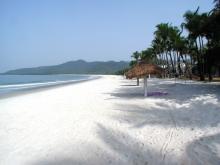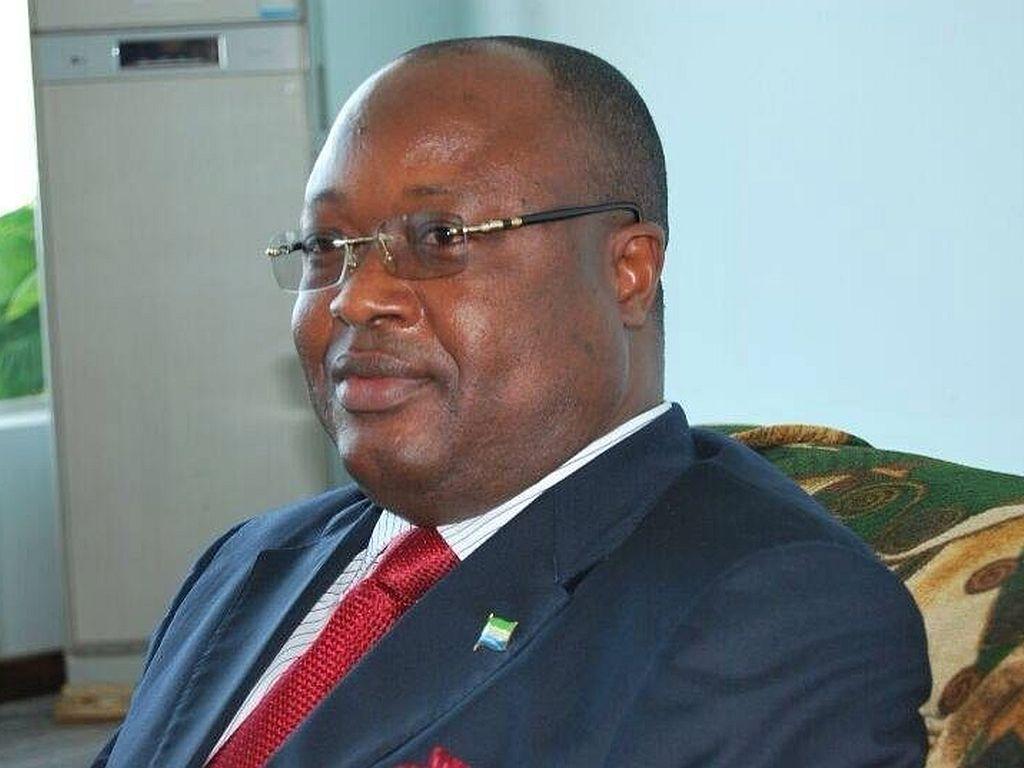Macroeconomic outcomes were broadly favorable in 2011.
Economic activity expanded further, supported by output increases in
agriculture, construction, and services, as well as the scaling-up of
infrastructure investments; GDP growth is estimated at 6 percent (5.3
percent in 2010).
End-year
inflation, although down from 2010, remained in double digits (16.9
percent), reflecting both external price shocks and a loose monetary
policy stance in the first half of the year. The external current
account deficit widened from 19.3 percent of non-iron ore GDP in 2010
to 52.3 percent in 2011 because of a significant increase in
FDI-related imports; the sizeable FDI flows also contributed to
exchange rate stability.
Program
performance was mixed.
Most reform measures were implemented, albeit with some delays; and
all performance criteria were met, except for that relating to the
contracting of nonconcessional public external debt. However, the
overall budget deficit was well above target, due in the main to
expenditure overruns financed through float transactions (unpaid
bills). By end-June 2012, the authorities had taken corrective fiscal
measures agreed with staff to strengthen fiscal policy
implementation.
The
economic outlook continues to be broadly positive and consistent with
program projections, although with downside risks.
Real GDP growth is projected at 21.3 percent, reflecting the
beginning of iron ore production; non-iron ore GDP is expected to
expand by 6.3 percent. The declining trend in consumer prices,
combined with continued sound fiscal and monetary policies, should
make the inflation target reachable although renewed risk of global
food prices increase will add to the challenge. The fiscal position
is expected to improve thanks to higher revenue collection coupled
with expenditure restraint. As iron ore exports begin in 2012 and
FDI-driven imports decline, the external position is set to
strengthen in 2012. Key risks to the outlook are related to
uncertainties on iron ore production and potential terms of trade
shocks.
The
risk of debt distress is moderate.
The debt sustainability analysis shows that, under the baseline
scenario, debt burden indicators remain below the relevant thresholds
over time. However, stress test results point to vulnerability to
exogenous shocks, highlighting the need to sustain fiscal
consolidation efforts, implement growth-enhancing policies, and
maintain prudent borrowing policies. Staff
recommends completion of the fourth review under the ECF arrangement
and the review of financing assurances.
Recent
Developments and Program Performance
1.
Economic
growth was robust in 2011 (Figure
1 and Table 1). Real GDP growth is estimated at 6 percent (5.3
percent in 2010), on account of strong performance in the agriculture
and services sectors and increased construction activity. The last
related to the scaling up of public investment in infrastructure and
the construction of two iron ore projects.
2.
Although
receding, inflation remained high.
Inflation eased somewhat in 2011, thanks to the decline in food
prices and the tightening in the monetary policy stance in the second
half of the year. However, inflation remained in double digits ending
the year at 16.9 percent (December on December). The 12-month
inflation rate dropped to 14.1 percent in June 2012.
3.
Monetary
and banking sector developments were satisfactory (Figures
3 and 4; Tables 4 and 9). Private sector credit growth remained
strong at about 22 percent, with loans concentrated in trade,
services, and construction. Financial sector soundness indicators
show that, as of end-2011, most banks were adequately capitalized,
profitable, and in compliance with prudential regulations.1 The ratio
of NPLs to total gross loans declined marginally from 15.6 percent at
end-2010 to 15.1 percent at end-December 2011. Treasury bills
auctions functioned smoothly during 2011, providing adequate
financing for the government budget.
4.
The
external current account worsened in 2011 because of FDI-related
imports (See
Figure 1 and Table 5). Export growth was low, while imports rose
significantly,
reflecting
the surge in global food and fuel prices and the increase in
FDI-related imports.
Consequently, the
current account deficit widened from 19.3 percent of non-iron ore GDP
in 2010 to 52.3 percent in 2011. Sizeable FDI inflows, mostly in the
iron ore sector, helped cover the current account deficit and
supported exchange rate stability. The leone depreciated by a modest
4.3 percent in 2011.
5.
Preparations
for presidential, legislative, and local elections, scheduled for
November
17, 2012, are advancing;
successful completion of the election process would mark another
important step in Sierra Leone’s transition from fragility. The
United Nations and other development partners are financing
two-thirds of the election costs. On the economic side, the
ECF-supported program complements UN peace building and development
partners’ efforts in priority areas, especially in the health
sector, youth employment, and training. Fund technical assistance,
including tax administration, public financial management, and
financial sector development, is closely coordinated with the
assistance provided by development partners.
6.
Program
implementation has been mixed
·
Quantitative
fiscal and monetary performance criteria at end-December 2011 were
met. However,
there were fiscal slippages; the overall fiscal deficit was
substantially
higher
than envisaged (4.6 percent of GDP versus a target of 3.0 percent),
reflecting
sizeable
expenditure overruns that were, in effect, financed by the
accumulation of
unpaid
bills (float transactions). The exceptionally large float added to
financing
pressures
in 2012. The limit on nonconcessional external borrowing was not
observed
due
to the contracting of a nonconcessional loan that became effective in
November
2011.
·
Structural
reform implementation progressed, although at a slower pace than
envisaged. Two
of three structural measures at end-December 2011 were
implemented,
albeit with delays. The integration of GST administration within the
Large
Taxpayer Office, and the publication of regulations for the PIP were
completed
in
March and June 2012, respectively, while the implementation of the
new small
taxpayer
regime is awaiting adoption by parliament of the legislation on the
amended
Finance
Act. The latter was approved by Cabinet in early August 2012 and will
be
presented
to parliament in coming weeks.
· Preliminary
information available suggests that all end-June quantitative
performance criteria were met, while further progress has been made
on structural reforms.
7.
The
implementation of the fuel pricing mechanism introduced at the time
of the second and third program reviews proved challenging.
The pricing formula did not call
for
increases in domestic fuel prices in the second half of 2011.
However, after a sharp
increase
in the landed price in early 2012, the authorities decided to suspend
the price
adjustment
mechanism for the remainder of the year, given heightened social
tension ahead
of
the November elections and the absence of a well-targeted social
safety net mechanism.
They
plan to re-instate the fuel pricing formula in 2013.
Outlook and
Risks
8.
The
revised macroeconomic outlook envisages much lower GDP growth in 2012
than was previously projected—21 percent, down from 51 percent.
The downward
revisions
reflect both start-up problems4 at the largest mining operation and
the weakening of
world
iron ore prices. Growth projections for 2013–16 have also been
revised to reflect a new
path
for the ramping up of iron ore production in the initial phase of the
projects. The outlook
for
iron production over the medium term is very favorable, with the two
active companies
already
embarking on expansion plans and the projects estimated to have a
life span in the
range
of 25–60 years.
9.
Growth
in the non-iron ore economy is projected at about 6 percent over the
medium term.
Agriculture, construction, and services will continue to be the main
drivers.
Non-iron
growth would also be supported by productivity gains in the private
sector from recent investment in infrastructure, as well as progress
in structural reforms. The short-term
impact
of lower growth in iron ore on the non-iron ore sector is modest.
10.
The
external sector outlook is positive.
The current account deficit is expected to improve in 2012–16, as
FDI-related imports decline and iron ore exports grow rapidly. That
said, the external position is vulnerable to terms of trade shocks
and scaling back of FDI inflows.
11.
The
balance of risks to the short and medium-term outlook is on the
downside.
A global economic slowdown, with worsening terms of trade for Sierra
Leone, would likely translate into lower growth in both the mining
and non-mining sectors, and reduced resource revenues for the
government budget. Iron ore output and price shocks would weaken both
the growth trajectory and the medium-term fiscal position. On the
domestic side, near-term budgetary financing constraints are tight;
failure to resist expenditure pressures in the remainder of the year
would jeopardize the maintenance of macroeconomic stability. The
authorities shared staff’s assessment of risks to the outlook and
agreed that vigilance in policy implementation will be needed to
ensure that appropriate mitigating measures are taken should these
risks materialize.
The above
communication is an excerpt, unadulterated, from the Executive
Summary of the International Monetary Fund’s October 2012 Country
Report No. 12/285 title: Sierra Leone: Fourth Review Under the
Three-Year Arrangement Under the Extended Credit Facility, and
Financing Assurances Review—Staff Report; Staff Supplement; Press
Release on the Executive Board Discussion; and Statement by the
Executive Director for Sierra Leone.








